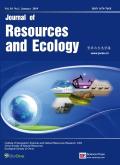Tourism Carbon Emission Forecasting, the Decoupling Effect and Its Driving Factors in the Yangtze River Economic Belt under the “Double Carbon” Target
Q3 Environmental Science
引用次数: 0
Abstract
By establishing an extended STIRPAT model, different scenarios were set up to predict the future tourism carbon emissions of the Yangtze River Economic Belt. The Tapio decoupling model and LMDI decomposition method were combined to analyze the decoupling effect and factors driving tourism carbon emissions in the historical and future periods of the Yangtze River Economic Belt. The results show that from 2000 to 2019, the carbon emissions of tourism in the Yangtze River Economic Belt exhibited a sustained growth trend and then a downward trend, and the overall spatial pattern was ‘low in the central region and high in the east and west’. In the different scenarios, the carbon emissions of tourism in the Yangtze River Economic Belt in the future show a trend of increasing at first and then decreasing, with peaks in different periods. In the historical period, the decoupling state of carbon emissions in the Yangtze River Economic Belt was mainly weak decoupling. Under the benchmark scenario, the decoupling of carbon emissions in the future tourism industry will not reach a strong decoupling state, while under the medium and low-carbon scenarios, strong decoupling will be achieved in different periods. Carbon emission intensity is the main factor in promoting the decoupling of tourism carbon emission in the historical period, while carbon emission intensity and investment efficiency are the main factors driving decoupling in the future. Accordingly, low-carbon development strategies are proposed for tourism in the Yangtze River Economic Belt.“双碳”目标下长江经济带旅游碳排放预测、脱钩效应及其驱动因素
通过建立扩展STIRPAT模型,设置不同情景对长江经济带未来旅游碳排放进行预测。结合Tapio解耦模型和LMDI分解方法,分析了长江经济带历史和未来时期旅游碳排放的解耦效应和驱动因素。结果表明:2000 - 2019年,长江经济带旅游碳排放呈现出先持续增长后下降的趋势,整体空间格局呈现出“中部低、东西高”的格局;在不同情景下,未来长江经济带旅游碳排放呈现先增加后减少的趋势,峰值出现在不同时期。在历史时期,长江经济带碳排放的脱钩状态以弱脱钩为主。在基准情景下,未来旅游业碳排放的脱钩不会达到强脱钩状态,而在中低碳和低碳情景下,将在不同时期实现强脱钩。碳排放强度是历史时期推动旅游碳排放脱钩的主要因素,而碳排放强度和投资效率是未来推动旅游碳排放脱钩的主要因素。据此,提出了长江经济带旅游低碳发展战略。
本文章由计算机程序翻译,如有差异,请以英文原文为准。
求助全文
约1分钟内获得全文
求助全文
来源期刊

Journal of Resources and Ecology
Environmental Science-Ecology
CiteScore
2.40
自引率
0.00%
发文量
107
 求助内容:
求助内容: 应助结果提醒方式:
应助结果提醒方式:


